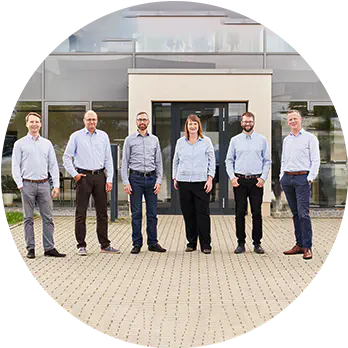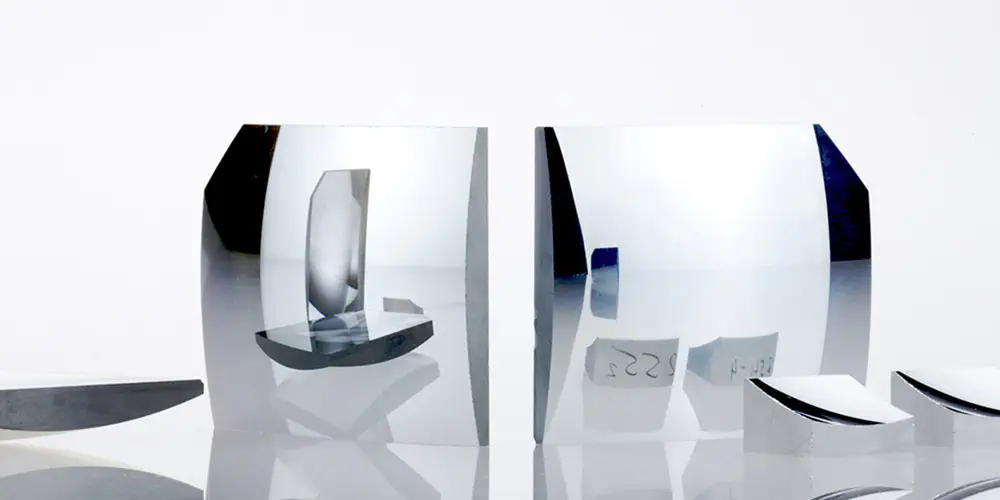
Aspherical mirrors
Custom-made
High-quality material coupled with innovative technology
Aspherical mirrors hold a wide range of applications, and serve well in multispectral imaging systems spanning from the IR to the UV spectrum. Their special shape offers improved geometrical optical imaging compared to spherical mirrors. The aspherical mirror family encompasses paraboloids, hyperboloids and ellipsoid mirrors. These, along with mirrors featuring bespoke aspherical surfaces, are flagship products in asphericon’s portfolio.
Depending on the material used, asphericon employs CNC grinding and polishing methods as well as diamond turning to fabricate aspherical on-axis and off-axis mirrors. Materials are chosen in conjunction with the client, the potential range covering almost all types of glass, such as quartz glass, and extending to silicon and ZERODUR®.
Employing optimized production methods, High-End Finishings like MRF (magnetorheological finishing), and high-precision, non-contact, full-surface measuring tools, asphericon manufactures aspherical mirrors of the highest calibre. Based on each client’s requirements, we can achieve accuracies down to 50 nm global form error (irregularity) or 25 nm RMSi. Depending on material and shape, the attainable roughness can be as low as 0.5 nm Rq. Find out more about our production capabilities.
On-axis and off-axis mirrors
Mirrors and reflectors with parabolic or client-specified aspherical surface curvatures are one of asphericon’s fortes. All designs are manufactured to asphericon’s high standards of quality. Our technology enables us to produce off-axis mirrors and reflectors. Depending on the geometry and deflection angle, we can tailor-make products to your unique requirements.
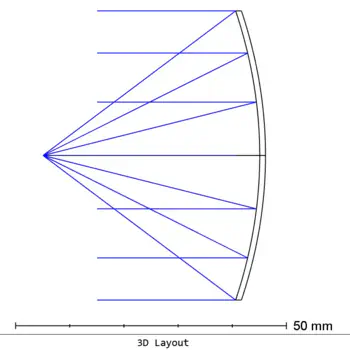 On-axis paraboloid for collimating a point light source
On-axis paraboloid for collimating a point light source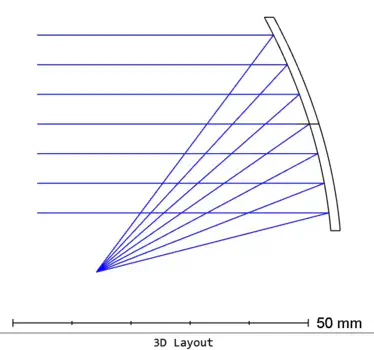 Off-axis paraboloid for focusing a collimated beam
Off-axis paraboloid for focusing a collimated beamSpecifications aspherical mirrors
| Customized Mirrors | |
|---|---|
| Diameter | 1-420 mm |
| Diameter Tolerance | +0/-0.3 mm |
| RMS irregularities (RMSi) | 25 nm |
| Surface imperfections (Scratch/Dig) | 20 - 10 |
| Coating | Customer specific |
| Measurement | Full-surface interferometric |
| Material | Customer specific (almost any type of glass, fused silica, silicon, ZERODUR®) |
| Mounting | Customer specific |
Typical applications of aspherical mirrors
The applications of aspherical mirrors are as varied as their coating possibilities. Besides their usage in light sources, they’re employed in laser applications and materials processing. There’s also a growing trend towards using aspherical mirrors in space technology and astronomy, such as reflecting telescopes. Other applications include:
- Collimation of point light sources
- Telescopes (e.g. plane mirrors, convex mirrors, hyperbolic mirrors)
- Fiber collimators
- Laser applications
- Materials processing by laser
- Lighting
Parabolic mirrors – a primary application of aspherical mirrors
Parabolic mirrors, also known as paraboloid mirrors, are symmetrically concave mirrors that concentrate incoming light rays into a singular focal point or reflect them in parallel.
Understanding parabolic mirrors
A parabolic mirror’s unique ability lies in its capability to focus parallel rays of light into a singular point. The larger the optical mirror, the more radiation it can gather and concentrate, leading to the greater accumulation of energy at the focal point. Conversely, a parabolic mirror can also emit light if there is a light source located at its focal point, releasing parallel rays of light.
Applications of parabolic mirrors
In addition to their use in spotlights, parabolic mirrors play a critical part in satellite communication, where they help transmit electromagnetic waves to a satellite and back to the receiver. These signals can be picked up by a satellite dish, enabling communication over vast distances.
Parabolic mirrors’ reflective properties also come into play in astronomy, helping telescopes concentrate starlight so that it becomes visible, or at least measurable.
In the realm of renewable energies, parabolic mirrors harness their light-concentrating capabilities for solar thermal power plants, capturing even weak solar radiation on cloudy days and rendering it usable.
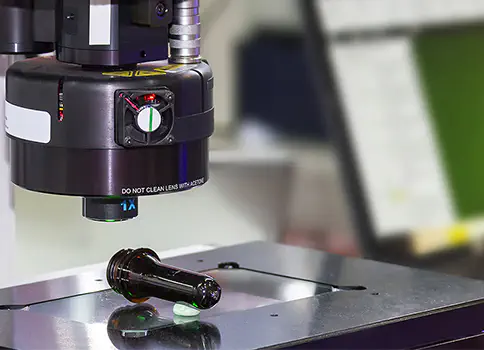 Lighting
Lighting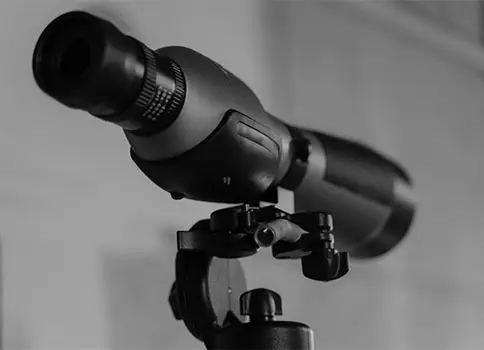 Telescopes
Telescopes Materials processing by laser
Materials processing by laserHyperboloids and ellipsoids
Other distinct forms of aspherical concave mirrors available from asphericon include hyperboloids and ellipsoids. Characterized by their elliptical cross-section, ellipsoidal mirrors serve as effective light collectors. Light emanating from one focal point of the ellipse is gathered at the second focal point. This ability to concentrate light is used in image projection, spectroscopy and lighting systems.
In contrast, hyperbolic mirrors reflect incoming light rays towards the first focal point so that they subsequently pass through the second focal point. This property is particularly useful in telescopes for extending the focal length.
Reference projects
Your request
